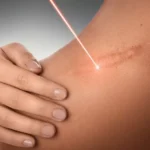
Cosmetic injectables, which are administered to alter the appearance and structure of the skin, can be grouped into several categories: neuromodulators, dermal fillers, and fat-dissolving treatments. In recent years, these injectables have been growing in popularity, as they provide the same effects as surgical procedures but are much less invasive, without the associated downtime and complications of said procedures.Sculptra and Radiesse are two dermal fillers that act as collagen biostimulators, which are administered to encourage the body to produce more collagen at the treatment site. Sculptra and Radiesse are perhaps the best-known products in tihs category, so it is worthwhile to take an in depth look at how they compare to one another.
How Do Collagen Biostimulators Work?
Generally speaking, there are two types of dermal fillers: fillers that are implanted to provide volume replacement, like hyaluronic acid-based fillers, and collagen biostimulators, such as Sculptra and Radiesse. These two types of fillers generally have their own characteristics, drawbacks, benefits, and application type.
Biostimulators promote collagen growth through fibroblast activation, which is either inflammatory (e.g. Sculptra) or non-inflammatory (e.g. Radiesse), depending on the involvement of a foreign body response. Over time, the formation of collagen has corrective benefits that extend the results of fillers over a long period of time, which is usually between one and two years.
The effects of these fillers are not immediate, as it takes time to stimulate tissue growth in the treated areas. Furthermore, the effects are irreversible, unlike those of hyaluronic acid fillers. For this reason, collagen biostimulators are not recommended for first-time patients.
Sculptra
Sculptra injections contain poly-L-lactic acid, a synthetic and resorbable material that is also used in other medical devices such as absorbable sealants, fixation screws, and dissolvable sutures. Like other biostimulators, the effects are delayed by several weeks or months; the results, however, are long-lasting, often lasting up to two years.
When injected into the skin, the poly-L-lactic acid microparticles of Sculptra incite a foreign body response that stimulates fibroblasts, mononuclear macrophages, and vascular fibrous tissue at the site of the implant(s). Fibroblasts envelope the deposited microparticles and are triggered to produce collagen fibres, resulting in skin thickening.
Treatment with Sculptra requires slightly more aftercare on the part of the patient than other dermal filler treatments, with the treated areas requiring a massage for five minutes, five times per day for five days after treatment. Also, repeat treatments are usually necessary in order to gain the full effects of Sculptra treatment. Typically, a treatment regimen is divided into a series of three treatment sessions given once monthly.
Radiesse
Radiesse injection contains microparticles of calcium hydroxylapatite suspended in a gel (70%) of water, glycerine, and a small amount of carboxymethylcellulose. The resulting gel has a high elastic modulus, allowing it to resist deformation. Due to its physical properties, Radiesse has to be placed deeper (periosteal) in the skin compared to its counterparts.
Radiesse has a slightly different method of stimulating fibroblast activity than Sculptra. As it is composed of the same component found in the mineral portion of bone and teeth, Radiesse is non-inflammatory. As such,, the filler acts as a scaffold for collagen production that promotes the ingrowth of new tissue similar to its surrounding. This results in an overall improvement in skin texture and volume, and these benefits can last as long as two years or more.
In addition to its role as a collagen biostimulator, Radiesse has volumizing properties due to its high elasticity and viscosity, which is an added advantage to using this dermal filler. Numerous studies and years of clinical experience have demonstrated the benefits and efficacy of Radiesse.
Comparison
Both Radiesse and Sculptra can be used to add volume to large areas with substantial volume loss, such as the cheeks or temples; for hand rejuvenation; to fill in skin depressions, such as pitted acne scars; and to treat pronounced nasolabial folds. The opacity of Radiesse is considered especially suitable for the purposes of hand contouring, as it causes prominent blood vessels like veins and tendons to be obscured. This effect cannot be achieved with other dermal fillers, including Sculptra.
The main difference between the two products is that Sculptra’s effects are not immediate, whereas Radiesse imparts both immediate and long-term volumizing effects. However, because Sculptra increases volume gradually, the results tend to appear very natural.
As Radiesse is highly viscous, it is not suitable for superficial placement. Thus, it is not recommended for areas with thin skin, such as the lips or lower eyelids, and should not be used for the treatment of fine lines and wrinkles. On the other hand, Sculptra provides purely volumizing effects, not lifting effects, and its results are very diffuse and consequently not targeted; hence, it is not particularly suitable for reshaping or augmenting procedures in places like the lips or eyes.
Conclusion
Dermal fillers with collagen biostimulation properties, such as Sculptra and Radiesse, are valued for their long-lasting, natural-looking results. While these two dermal fillers are comparable in terms of efficacy, safety, and their duration of results, there are considerable differences in terms of their composition, mode of fibroblast stimulation, and physical properties. Practitioners should be knowledgeable about these differences in order to help their patient attain the best clinical outcomes from dermal filler treatment.
Aesthetic injectable companies refer to businesses or companies that specialize in manufacturing, distributing, or providing aesthetic injectable products and services. These companies focus on developing and supplying injectable substances used for cosmetic purposes, typically administered by qualified medical professionals. Aesthetic injectable companies play a crucial role in the field of aesthetic medicine and cosmetic dermatology by offering a variety of injectable products designed to enhance facial features, reduce wrinkles, and improve overall skin appearance.
Key aspects of aesthetic injectable companies include:
-
Product Development: These companies research, develop, and manufacture aesthetic injectables such as dermal fillers, botulinum toxins (e.g., Botox), collagen stimulators, and other specialized formulations. They often innovate new products to meet evolving market demands and technological advancements.
-
Distribution and Sales: Aesthetic injectable companies distribute their products through authorized channels, including healthcare providers, medical spas, and aesthetic clinics. They may also sell directly to licensed professionals who administer these treatments.
-
Regulatory Compliance: Due to the medical nature of their products, aesthetic injectable companies adhere to strict regulatory guidelines and obtain necessary approvals from health authorities (e.g., FDA in the United States) to ensure safety, efficacy, and quality standards.
-
Training and Support: Many companies provide training and educational support to healthcare professionals on the proper use, administration techniques, and safety protocols associated with their injectable products. This ensures that practitioners can deliver treatments effectively and safely.
-
Customer Support: Aesthetic injectable companies offer customer support services to healthcare providers and consumers, addressing inquiries, providing product information, and assisting with product usage and troubleshooting.





